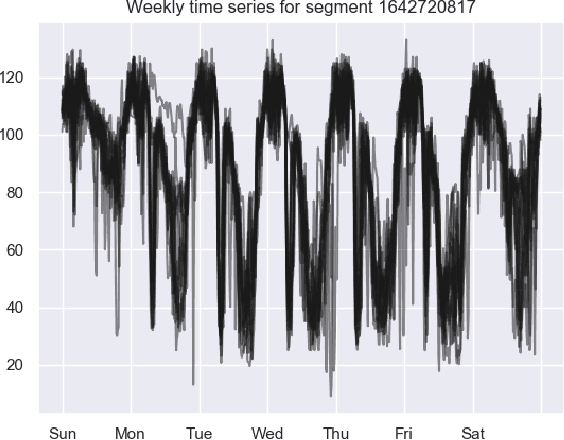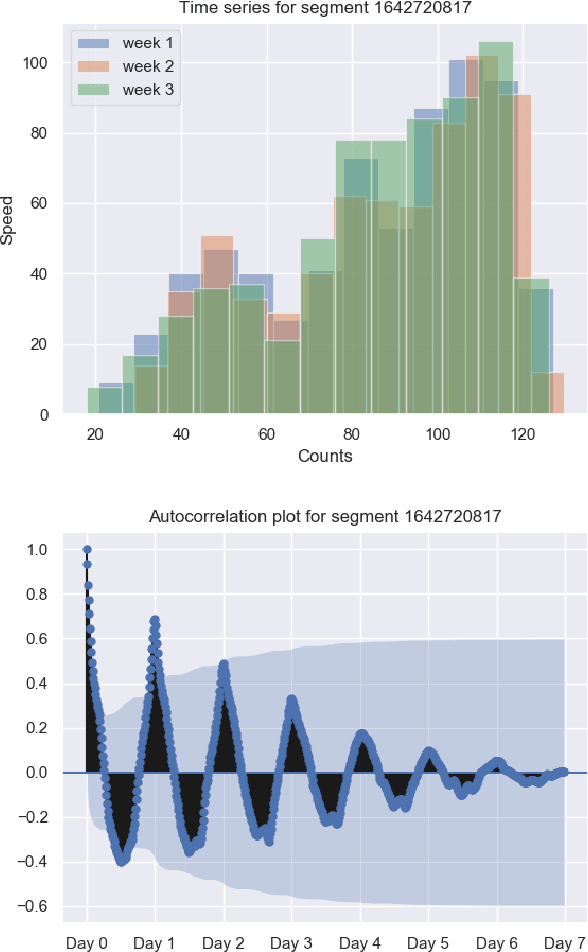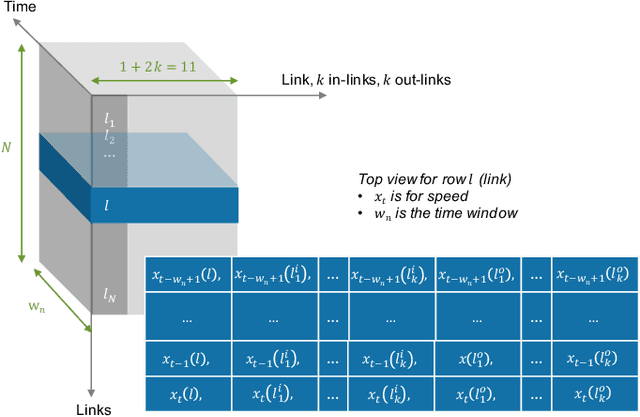Yassine Lassoued
Deep Learning to Scale up Time Series Traffic Prediction
Nov 29, 2019



Abstract:The transport literature is dense regarding short-term traffic predictions, up to the scale of 1 hour, yet less dense for long-term traffic predictions. The transport literature is also sparse when it comes to city-scale traffic predictions, mainly because of low data availability. The main question we try to answer in this work is to which extent the approaches used for short-term prediction at a link level can be scaled up for long-term prediction at a city scale. We investigate a city-scale traffic dataset with 14 weeks of speed observations collected every 15 minutes over 1098 segments in the hypercenter of Los Angeles, California. We look at a variety of machine learning and deep learning predictors for link-based predictions, and investigate ways to make such predictors scale up for larger areas, with brute force, clustering, and model design approaches. In particular we propose a novel deep learning spatio-temporal predictor inspired from recent works on recommender systems. We discuss the potential of including spatio-temporal features into the predictors, and conclude that modelling such features can be helpful for long-term predictions, while simpler predictors achieve very satisfactory performance for link-based and short-term forecasting. The trade-off is discussed not only in terms of prediction accuracy vs prediction horizon but also in terms of training time and model sizing.
 Add to Chrome
Add to Chrome Add to Firefox
Add to Firefox Add to Edge
Add to Edge